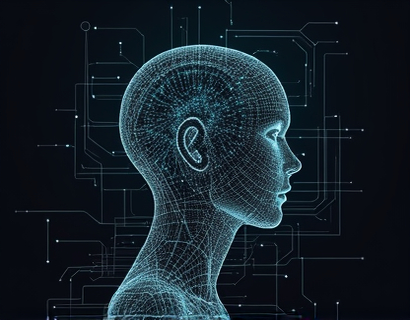Ethereum Layer 2: Navigating Scalability and Interoperability for Developers and Enthusiasts - 2025 Insights
The Ethereum ecosystem has been at the forefront of blockchain innovation, driving advancements in decentralized applications, smart contracts, and digital assets. However, as the network has grown, scalability and interoperability have emerged as critical challenges. Layer 2 solutions have emerged as a pivotal response to these issues, offering enhanced performance and broader connectivity. This comprehensive guide aims to provide developers and enthusiasts with essential insights and updates on Layer 2 solutions, helping them navigate the dynamic and evolving Ethereum landscape in 2025.
Layer 2 solutions are designed to address the limitations of the main Ethereum blockchain, or Layer 1, by processing transactions off the main chain. These solutions significantly reduce transaction costs and increase throughput, enabling faster and more efficient operations. Understanding the various Layer 2 approaches is crucial for anyone looking to stay ahead in the Ethereum ecosystem.
Understanding Layer 2 Solutions
Layer 2 solutions can be broadly categorized into two main types: state channels and sidechains. State channels, such as Lightning Network for Bitcoin and Optimistic Rollups and ZK-Rollups for Ethereum, allow for multiple transactions to be bundled and settled off-chain, with only the final state submitted to the main chain. Sidechains, on the other hand, are separate blockchains that are linked to the main Ethereum network, enabling different consensus mechanisms and features.
Optimistic Rollups and ZK-Rollups are two prominent state channel solutions on Ethereum. Optimistic Rollups bundle multiple transactions into a single batch, which is then submitted to the main chain. If any transaction in the batch is fraudulent, the rollup operator is responsible for rectifying the error. This approach relies on a challenge period, where anyone can dispute the batch's validity. ZK-Rollups, or Zero-Knowledge Rollups, use cryptographic proofs to verify the validity of transactions off-chain, submitting a compact proof to the main chain. This method offers higher efficiency and faster finality compared to Optimistic Rollups.
Scalability Benefits of Layer 2
One of the primary advantages of Layer 2 solutions is their ability to scale the Ethereum network without compromising security or decentralization. By offloading transactions to Layer 2, the main chain can focus on critical operations, reducing congestion and lowering transaction fees. This scalability is essential for supporting a growing number of decentralized applications and users.
For developers, understanding the scalability benefits of Layer 2 is crucial. Frameworks like Optimism and Arbitrum for Optimistic Rollups, and StarkNet for ZK-Rollups, provide robust tools and libraries to build scalable dApps. These frameworks abstract much of the complexity involved in implementing Layer 2 solutions, making it easier for developers to deploy and manage scalable applications.
Interoperability in the Ethereum Ecosystem
Interoperability is another key aspect of Layer 2 solutions, enabling seamless interaction between different blockchain networks and protocols. Interoperability enhances the utility of the Ethereum ecosystem by allowing assets and data to flow freely across various chains and platforms.
Polygon, formerly Matic, is a prominent Layer 2 solution that focuses on interoperability. It uses Optimistic Rollups and provides bridges to connect Ethereum with other blockchains, facilitating cross-chain transactions and asset transfers. This interoperability is vital for building a connected decentralized web, where users can interact with a wide range of dApps and services without being confined to a single blockchain.
Case Studies and Real-World Applications
Several projects have successfully leveraged Layer 2 solutions to enhance scalability and interoperability. For instance, the DeFi platform Aave has implemented Optimistic Rollups to reduce transaction costs and increase processing speed, allowing for more efficient lending and borrowing services. Similarly, the gaming platform Axie Infinity uses Polygon to deliver a smoother gaming experience with lower fees and faster transaction times.
These case studies demonstrate the practical benefits of Layer 2 solutions. Developers can draw inspiration from these examples to design and deploy their own scalable and interoperable dApps, tapping into new opportunities in the Ethereum ecosystem.
Challenges and Considerations
While Layer 2 solutions offer significant advantages, they also come with challenges and considerations. Security remains a top concern, particularly with Optimistic Rollups, where the reliance on challenge periods and fraud proofs can introduce risks. Developers must carefully evaluate the security models of the Layer 2 solutions they choose to implement.
Another consideration is the complexity of integrating Layer 2 solutions into existing projects. Developers need to stay updated with the latest tools and best practices to ensure smooth integration and maintenance. Community support and documentation play a crucial role in overcoming these challenges.
Future Trends and Developments
The Layer 2 space is rapidly evolving, with ongoing research and development pushing the boundaries of scalability and interoperability. Cross-Layered Protocols (CLPs) are an emerging trend that aim to create a unified layer spanning multiple blockchain networks, further enhancing interoperability. CLPs enable seamless interactions between different Layer 1 and Layer 2 chains, paving the way for a more interconnected decentralized ecosystem.
Additionally, the Ethereum 2.0 upgrade, which includes the transition to Proof of Stake and the introduction of sharding, will complement Layer 2 solutions by providing a more robust and scalable foundation for the network. Developers should keep an eye on these developments to leverage the full potential of the Ethereum ecosystem.
Conclusion
Layer 2 solutions are transforming the Ethereum landscape, addressing scalability and interoperability challenges and unlocking new possibilities for developers and users. By understanding and implementing these solutions, developers can build more efficient and accessible dApps, while enthusiasts can enjoy a smoother and more diverse decentralized experience. As the ecosystem continues to evolve, staying informed and adaptable will be key to thriving in the dynamic world of Ethereum.










































